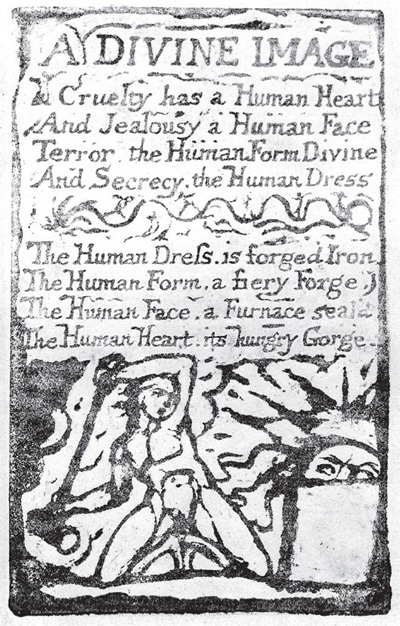3.1 Imagination and imagery
From the very origins of concern with the imagination in the work of the ancient Greeks, the imagination has been associated with imagery. But what is the relationship between imagination and imagery? In chapter 12 of his book, The Language of Imagination (1990), Alan White addresses this question and argues that imagination neither implies nor is implied by imagery.
Activity 7
Read the extract from White's book.
Click on the 'View document' link below to read Alan R. White on 'Imagination and imagery' [Tip: hold Ctrl and click a link to open it in a new tab. (Hide tip)] .
What is White's claim in the first paragraph of the extract? How does he argue for this claim, and how convincing is his argument?
What further argument for this claim does he provide in the second paragraph? How convincing is this further argument?
What is White's claim in the third paragraph? How does he argue for it, and how convincing is his argument?
In the fourth paragraph, White goes on to consider a ‘more debatable problem’. What is this problem, and what is White's ‘short answer’?
In the last three paragraphs, White suggests a number of differences between imagination and imagery. We will look at these in more detail in a moment. But to what specifically is imagining being contrasted?
Discussion
White's claim is that imagination does not imply imagery, for which he argues by offering counter-examples. One might have doubts about some of them. In imagining what the neighbours will think, for example, might I not have an image of the neighbours? Having such an image may not constitute the imagining, but might someone not object that some such image is necessary? But in cases such as imagining an objection (as I have just done), although images may be involved, here too it seems implausible to argue that they must be. So it seems right to conclude that imagination does not imply imagery, even if it may involve it in particular cases.
White's further argument might be formulated as an (attempted) reductio ad absurdum of the claim that imagination implies imagery:
Imagination implies imagery.
Imagery implies images.
Images must resemble ‘in some copyable way’ what they are images of.
Therefore, we can only imagine what can be ‘copied’ as an image.
But we can imagine far more than what can be ‘copied’ as an image.
So imagination does not imply imagery.
(1) is the premise that White wants to reject. (2), (3) and (5) are the additional premises, which White accepts, at least here. (In fact, later on in the chapter, White goes on to reject (2) as well, but he does not comment on the implications of this for his earlier argument.) From (1), (2) and (3) he infers (4), but since this is in conflict with (5), he concludes that (1) is false. But as the argument has been formulated, there are clearly other possibilities. Why, in particular, should we accept (3)? Why should images be restricted merely to images of what is ‘copyable’? Can we not have images of abstract things? Consider the plates that William Blake prepared for his poems in Songs of Innocence and of Experience (an example is given in Figure 1). Do these not offer images of things that are not ‘copyable’ as White seems to understand this? Or consider solving a geometrical problem. Can I not draw exactly how I imagined the problem could be solved? White's further argument seems unconvincing, then, and adds little to his first argument, although it does reveal an assumption he makes about what ‘images’ are.
Imagination, White has argued, does not imply imagery. In the third paragraph, he argues for the converse: namely, that imagery does not imply imagination. He again proceeds by offering counter-examples. We can have images in dreams and memory, for example, or after-images and hallucinations, but would not speak of ‘imagining’ here, he suggests. However, it may be open to us to regard imagination as playing some role in such experiences, although we might agree that the mere having of images does not constitute imagining.
As White formulates it, the ‘more debatable problem’ is whether, when imagery does occur in imagining, it plays an essential role, i.e. whether there are some forms of imagination in which imagery is essential. White wants to argue that there are no such forms, since there are intrinsic differences between imagination and imagery.
The contrast that White is drawing seems to be between imagining and the mere having of images. It is worth keeping this in mind in assessing the differences he alleges between imagination and imagery.

The poem in Figure 1 was originally written for Blake's Songs of Experience (1794), as the counterpart to ‘The divine image’ of his earlier Songs of Innocence (1789), but it seems not to have been used in any of the copies of the combined Songs that Blake produced in his lifetime. The plate that Blake prepared for it was never coloured, and the poem is only known from a print made after Blake's death (see Keynes 1970,13,125; Wu 1998,84). ‘The divine image’ of the Songs of Innocence has five verses, of which the third runs as follows: ‘For Mercy has a human heart/Pity, a human face:/And Love, the human form divine,/And Peace, the human dress.’ The contrast between this and the poem above is stark, a reaction perhaps to the horrors of the French Revolution. But Blake presumably then felt that it was too extreme, though the plate itself was obviously not destroyed. The poem that actually appeared as the counterpart to ‘The divine image’ was ‘The human abstract’, which is far subtler in tone.
As Keynes describes it in his facsimile edition, Blake's plate shows ‘Los, the poet and craftsman, forging the Sun, symbol of imagination, into the words of his poem with furious blows of his creative sledge-hammer on the anvil’ (1970, 125). The plate may be literally an image of someone hammering something on an anvil, but it clearly represents far more – the way in which our sensitive, imaginative nature can be beaten out of us by hatred and brutality, as revealed in the violence of the French Revolution or the oppression of industrialisation, for example. The plate is an image, in other words, of far more than what is merely ‘copyable’.
In the final three paragraphs of the extract, White seems to be making quite a strong claim: that imagery never plays an essential role in imagination. But is this right? To answer this, let us consider a response to White's arguments that is made by Gregory Currie and Ian Ravenscroft in Recreative Minds (2002). In their first chapter, Currie and Ravenscroft distinguish between recreative and creative imagination. By ‘recreative imagination’ they mean the capacity to recreate in our minds states that are in some sense ‘counterparts’ to perceptions, beliefs, desires, and so on (2002, 11). In imagining a cat, for example, my imagining is some kind of ‘counterpart’ to seeing it. The ‘creative imagination’, on the other hand, is involved in creating something valuable in art, science or practical life, but this is only mentioned in order to be put aside (2002, 9). Their concern is with recreative imagination, and mental imagery, they suggest, is one important kind. In their second chapter, they offer arguments for this view, or more specifically, respond to White's arguments against this view.
Activity 8
Read the extract from Currie and Ravenscroft (‘Is imagery a kind of imagination?’). What are the four arguments that Currie and Ravenscroft find in White's discussion, and what is their response to each one? Do they do justice to White's arguments, and provide a convincing refutation?
Click on the 'View document' link below to read Gregory Currie and Ian Ravenscroft on 'Is imagery a kind of imagination?'.
Discussion
Let us consider each of the four arguments in turn.
According to White's first argument (drawn from the third and fifth paragraphs of the reading ‘Imagination and imagery’), imagination is under voluntary control while imagery is not, or at best under only minimal control. But as Currie and Ravenscroft point out, there are cases of imagination too that are not under voluntary control. So there seems to be no basis here for claiming any essential difference between imagination and imagery.
According to the second argument (drawn from the fifth paragraph of the White extract), imagining, unlike having an image, is something that I do. White does not put it like this himself, but the message is arguably the same. White talks of having imagery, unlike imagining, being an experience. Imagery happens to one; in imagining something, one is active. But as Currie and Ravenscroft remark, imaginings ‘can come and go independently of one’ in just the way that imagery can. So again, it would seem, there is no basis here for claiming an essential difference.
According to the third argument (also drawn from the fifth paragraph of the White extract), imagery, unlike imagination, ‘has an objectivity and independence’. But again, as Currie and Ravenscroft point out, I can be just as surprised by features of what I imagine as I can by features of my images. So they again seem right to reject White's argument. According to the fourth argument (drawn from the sixth paragraph of the White extract), imagery ‘is particular and determinate, whereas imagination can be general and indeterminate’, as White puts it himself. This is controversial, as White recognises in a footnote to the paragraph. Currie and Ravenscroft claim that images can be indeterminate too, just as imagining can be particular, which seems right. So this fourth argument too seems not to establish any essential difference between imagery and imagination.
In the seventh paragraph of a second extract from White (see Activity 9), he offers a further argument, which Currie and Ravenscroft do not consider. Imagery, White writes, ‘does not express anything, whereas imagination does’. Here most of all, perhaps, we can see that what White is concerned to describe are the differences between merely having an image and imagining. Take his example of an image of a sailor on a beach. This could be interpreted as a sailor scrambling ashore, his twin brother crawling backwards into the sea, or any of a host of other things. Imagining that a sailor is scrambling ashore, then, cannot consist in having such an image. We can agree with White on this. But it does not follow that having such an image is not an essential part of the imagining, which is the issue at stake as White himself formulates it (in the fourth paragraph of the first White extract). What turns the mere having of an image into imagining is what we do with that image – the role it plays in our thinking. This is what Currie and Ravenscroft mean when they talk of imagery being a form of imagination. It is acts of producing and using images that constitute one form of imagining, and images are of course essential in this.
If this is right, then we can agree with Currie and Ravenscroft that imagery – or more accurately, using images in our thinking – is one form of imagining. To go back to White's earlier arguments, though, we can agree with White that imagination does not imply imagery, and that imagery does not imply imagination. But this is not to say that there are no forms of imagining in which images play an essential role. (Descartes, Hume and Kant all thought that there were forms of imagining in which images were essential. Perhaps they were wrong to focus too exclusively on these forms of imagining, but they were not confused from the outset.)
